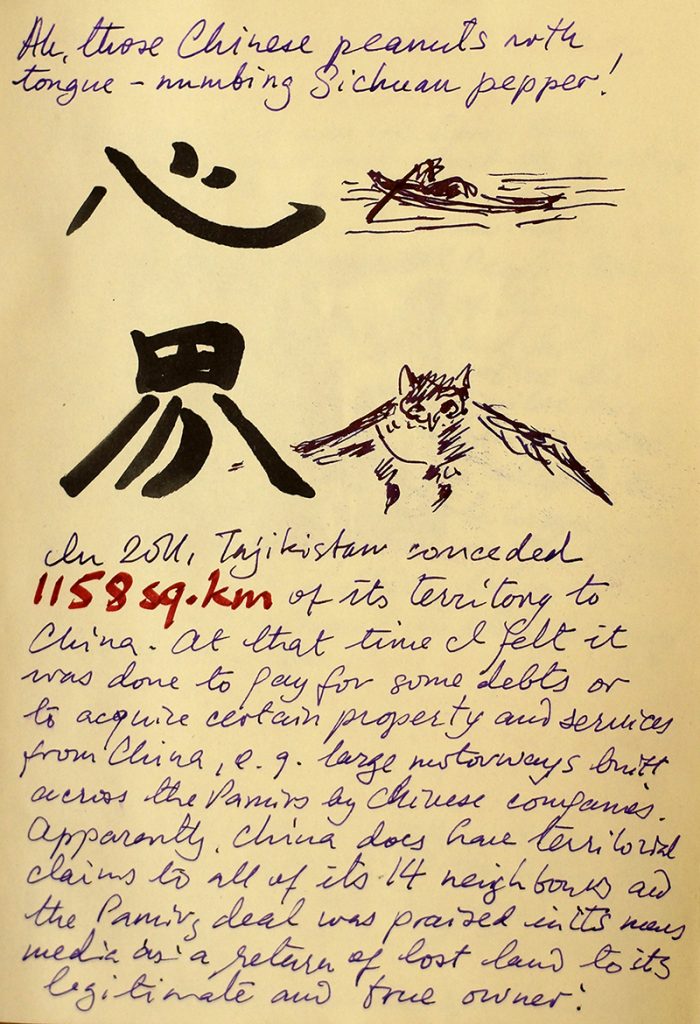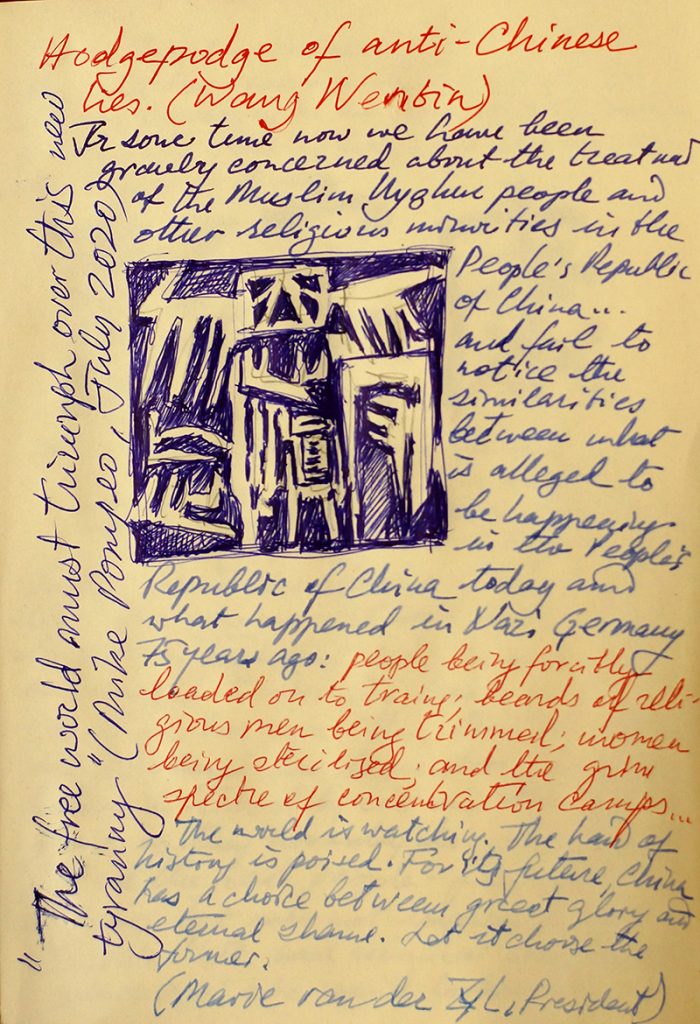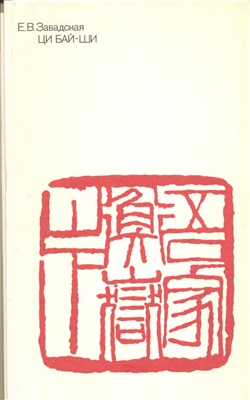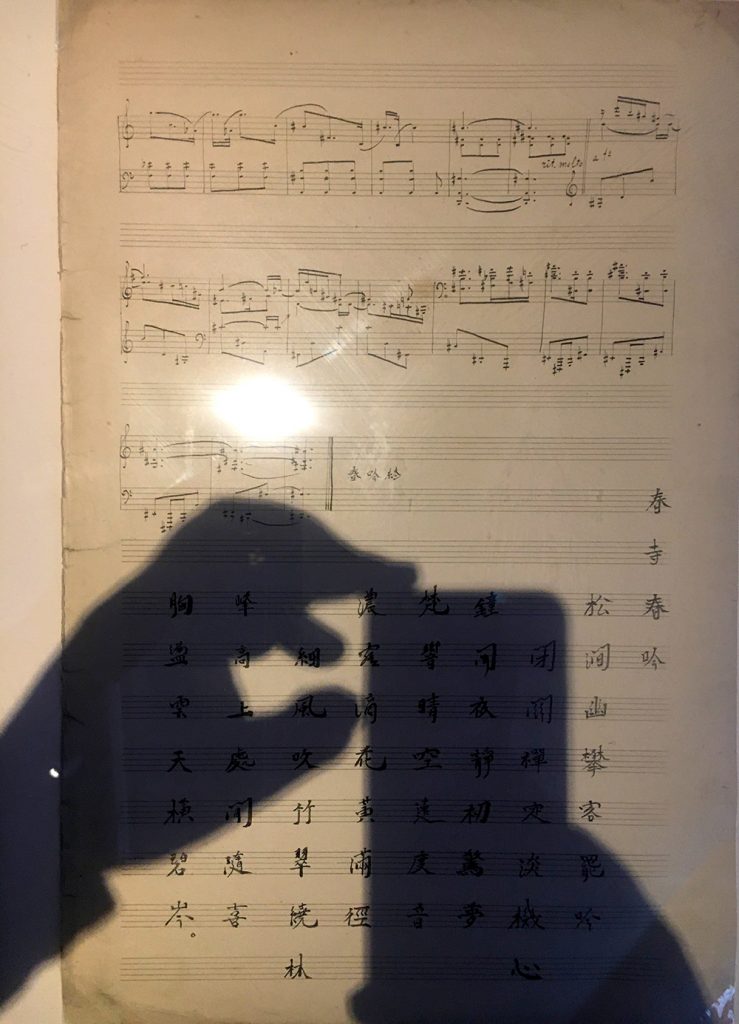Seeing the Invisible: Documenting and Interpreting China’s Cultural Presence in Uzbekistan (Part 1)
August, 2020
—
alexey ulko
From the beginning, I saw the primary objective of my research was to document and interpret the different visual signs and symbols of China’s growing presence in Uzbekistan. I began writing notes and taking and collecting photos; trying to categorise and interpret the evidence with the help of different conceptual approaches, from visual anthropology to object-oriented ontology.
The COVID-19 pandemic and ensuing quarantine, however, have interfered with this intention in more ways than one. As I was thinking about how the Belt and Road Initiative has influenced Uzbekistan, the pandemic struck and very visibly changed the rules of the game. Beginning in Wuhan, it was a clear illustration of how China can affect the world – though I have serious reservations about calling this influence “Chinese”. The more I thought about the asymmetrical political and cultural relations between China and Uzbekistan, the more disjointed and fragmented the picture became. Not fragmented in a stylish postmodernist way, but rather, uselessly and helplessly mixed up and confused.
I had set myself the task of researching “the politics and aesthetics of the visual representation of China-Uzbek relations, through documentary photography and film,” in order to provide anthropological perspectives on these. But typing those words on a keyboard made in China, sitting in an armchair produced in China, drinking tea from a china cup, and seeing the plastic letters HUAWEI on my modem connecting me to the world, made me question whether I could aspire to produce any meaningful research on something so intangible – the world or flow that is literally everywhere – and whether I could make any meaningful statement about China as a hyper-object, all while I remained within it.
“The Chinese invented gunpowder, tea, silk production, the compass, paper, mechanical clocks…” – ah, thank you very much. This list of inventions probably isn’t as long as the one of all the objects around me which had been made in China, but it tells us an important story. If today’s narrative is that the Chinese are good at adapting and replicating something that has been invented (usually from the so-called “West”), it was obviously different in the past: things were invented in China and adapted for future use by others.
Peter Greenaway’s mesmerising film, The Pillow Book (1996), tells the story of a Japanese born model living in Hong Kong. Her aunt tells her that when she is twenty-eight years old, the diary of a Japanese woman (Sei Shonagon), known as Pillow Book, will be a thousand years old, and that she (Nagiko) will be the same age as Sei Shonagon when she had written the book. The film made a profound impact on me and made me want to learn calligraphy (which I never really did).
However in 969, exactly a thousand years before I was born, two generals serving the Song Dynasty invented a fire arrow which used gunpowder tubes as mini rocket engines, enabling them to fly much further, and cause damage to any inflammable object by setting them alight. This was the year rocket artillery was invented and utilized for the first time. Later, the Chinese produced the first cannons, but these would be vastly improved by the Europeans who would go on to use them many centuries later to subjugate China in the 19th century.
These kinds of reverse loops seem to characterise much of what is going on between China, Central Asia and the West, and there is little in popular literature that can describe it better than the books on the Silks Roads by Peter Frankopan (The Silk Roads, 2015 and The New Silk Roads, 2018). I will return to Frankopan’s texts later, but for now I would like to explore the issue from a very different angle.
***
What are my earliest memories of China or anything Chinese? It could be a conical straw hat I played with in my early years (though that could also have been Vietnamese). The very delicate porcelain tea set which our family used only on special occasions. (We still have some of the cups, very Victorian by design, not bone china judging by its colour, but still very fine and translucent.)
My father’s white shirt with a label I think saying “The Great Friendship”. The stories my father told me about the Chinese students he knew while studying at some in-service artist training course in Moscow in the 1960s.
Beautiful facsimile prints of Qi Baishi’s watercolours. I remember Red Morning Glories and some similar pieces hanging in my little room as late as 1996. (Where have they all gone?) An exquisitely printed book on him by Evgeniya Zavadskaya (Tsi Bai Shi, 1982). (Is that still with my sister?) I have just downloaded it in .pdf.
In Uzbekistan, the growing Chinese presence had been relatively low-profile and pragmatic. It can be broadly categorised into being culturally and visually marked (e.g. the Confucius Institute, Chinese restaurants) or unmarked (Chinese investment projects). At the same time, there have been few, if any, noticeable cultural projects involving Chinese artists, curators, writers, musicians or photographers. The establishment of the Confucius Institute in Samarkand marked a shift from the earlier invisibility towards a more spectacular and confident Chinese cultural manifestation.
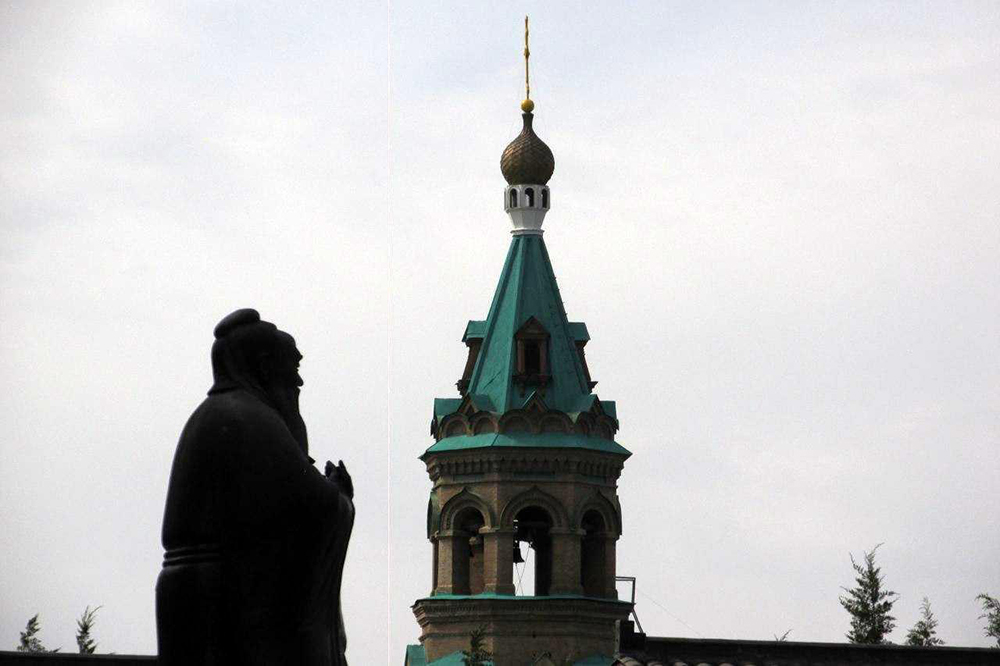
The statue of Confucius and the belfry of St. Alexey’s Cathedral in Samarkand
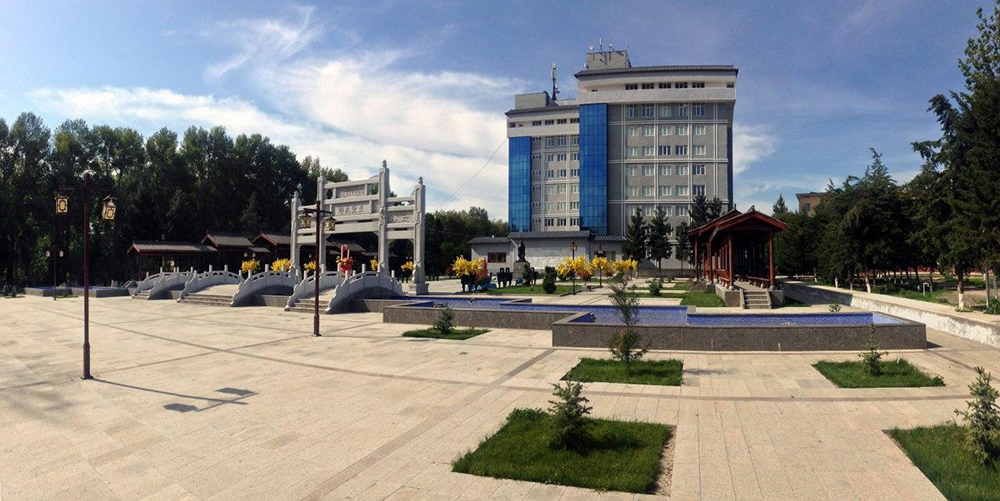
One of the main buildings of the Samarkand State University
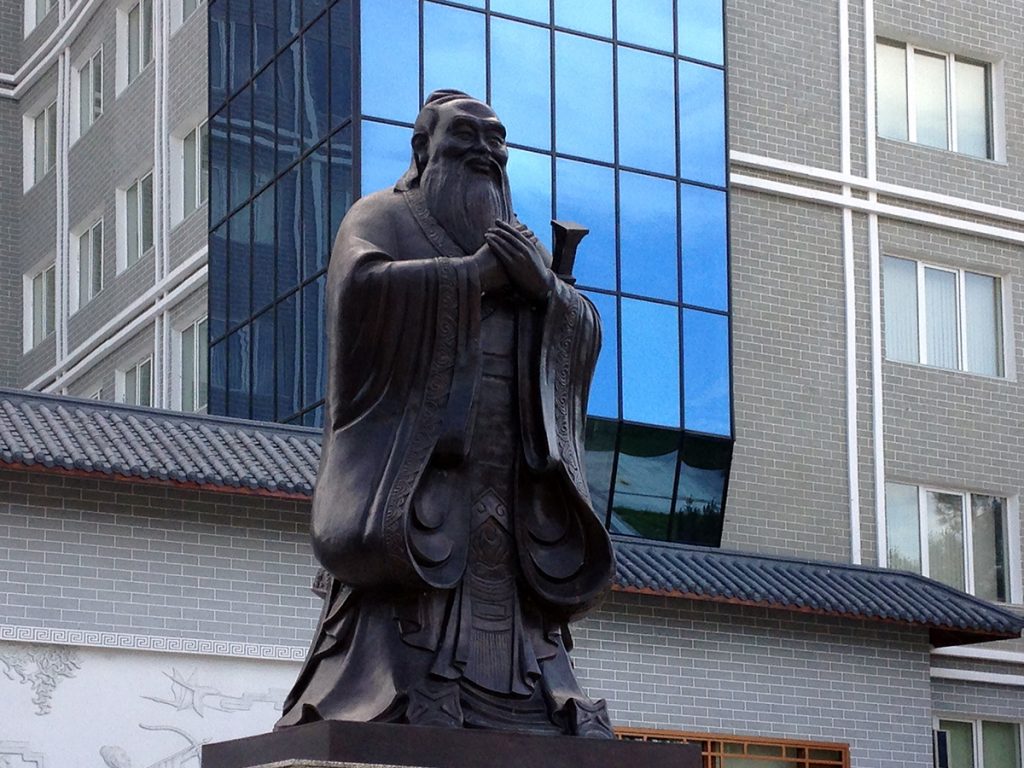
The statue of Confucius in front of the Samarkand State University that hosts the Confucius Institute
As the Belt and Road Initiative (BRI) seems to have regained momentum after its setback in 2018, I thought it would be interesting to follow the dynamics of China’s visual presence in Uzbekistan and reflect it through photographs, videos and texts.
What is the BRI? How large is it? Like China, it can also be seen as a hyper-object that encompasses nearly half of the world’s population, a multitude of resources, and 50 percent of the global GDP. About 150 countries, including the Central Asian states, have reportedly joined the BRI in one way or another. Its infrastructure is accompanied by large-scale investments from Chinese companies and institutions (such as the Silk Road Foundation with funds of US$40 billion), and the Asian Infrastructure Investment Bank (AIIB), with funds of US$100 billion to provide development aid to the countries who participate in the BRI. The Chinese writer Zhenqing Zheng, claims that “more and more people see the BRI as an incremental China-driven project to develop international and regional public goods in terms of economic cooperation, free trade, infrastructural connectivity, international security and mutual trust. The BRI advocates the mutual docking of development strategies between participant countries and China. The aim is to build large-scale, high-level, deep-seated and high-standard international and regional economic networks.” If so, why is it then seen by many as a threat, rather than an opportunity?
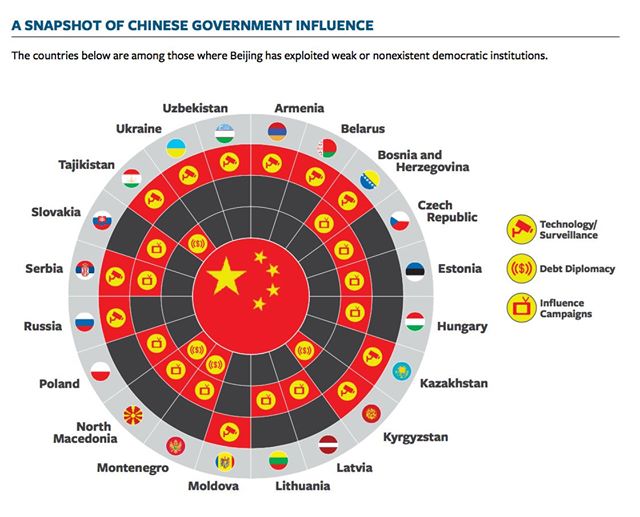
A snapshot of Chinese government’s influence
One possible reason is the sheer might of the Chinese economy. Another reason is a deep distrust of Chinese intentions, which often borders on Sinophobia. As Sebastian Peyrouse claims, all Central Asian experts on China express concern about the silence cultivated by the authorities in their countries about their partnership with China. They worry that the true extent of China’s grip over the region has been concealed. They criticise the authorities’ incapacity to make decisions for the future of Central Asian nations, and are concerned about the atmosphere of suspicion, generated by the lack of information.
About ten years ago I spoke to a driver and a junior officer working for a Chinese company with a large office located on the same floor as the educational centre I was visiting at the time. I asked them if they spoke any Chinese and they said no. “In fact, the Chinese do not encourage local employees to study Chinese, and do not recruit any local Chinese-speakers. We have an interpreter to translate any important negotiations, and the junior staff are learning Russian and Uzbek. All decisions are made only by the senior Chinese officials, and they do not want servants to understand what their masters are saying.”
***
As a child, I liked Chinese fairy tales and often wondered why many of them featured young officials sitting exams, carrying documents and seals, performing various administrative functions. I liked stories about the huli jing (vixens), but my favourite was from Yao folklore, called Red Maize. Later, I read Journey to the West by Wu Cheg’en, and became most fascinated by the character Sha Wujing with his gourd and staff. Li Bai and Du Fu were my favourite poets at a certain point, especially the former.
Li Bai was born in a Silk Road city known today as Ak-Beshim, some 30km from Bishkek in Kyrgyzstan. He started writing poetry before he was ten, was well-travelled, and skilled at riding, hunting, and fencing.
From a pot of wine among the flowers
I drank alone. There was no one with me –
Till, raising my cup, I asked the bright moon
To bring me my shadow and make us three.
Alas, the moon was unable to drink
And my shadow tagged me vacantly;
But still for a while I had these friends
To cheer me through the end of spring….
I sang. The moon encouraged me.
I danced. My shadow tumbled after.
As far as I knew, we were boon companions.
And then I was drunk, and we lost one another.
…Shall goodwill ever be secure?
I watch the long road of the River of Stars.
***
Christopher Francis Patten, the last British Governor of Hong Kong, was denounced by some Chinese media outlets as the “whore of the East,” a “serpent” and a “wrongdoer who would be condemned for a thousand generations”.
***
There are several Chinese restaurants in Tashkent, and many more Korean ones which also often serve a generic East Asian mixture. I tried Chinese food for the first time in Islamabad in 1998 and found it very unusual. The gluey, homogenous, chicken soup; heavily fried vegetables; chicken pieces in a sticky sauce which resembled mixed caramel, but had a touch of spice – all of these tasted strange and artificial. But I liked chopsticks. I do not remember exactly where and how I learned to use them – probably much later when I started visiting Korean restaurants in Tashkent and elsewhere. In the early 1990s I often travelled to Karachi where I developed a taste for spicy food, which I have eaten ever since, transforming even the simple Uzbek plov into some kind of biryani. Uzbeks are, of course, famously conservative in their cuisine, and in many families they eat little else apart from their own traditional dishes – and their food isn’t as spicy when compared to Indian, Chinese or Korean cuisines.
However, Chinese influence remains evident in dishes such as laghman (noodles), which has been borrowed from the Uyghurs. The Uyghur food can be found in Tashkent, but it is not as abundant as in places like Osh in Kyrgyzstan. In other words, in different parts of Central Asia, depending on the type of restaurants, you can get different local varieties of Chinese food (of which I can count at least three). The first is the outcome of the above-mentioned cultural transfer from the Chinese to the Uyghurs, to the Kyrgyz and Uzbeks. By and large, it is still determined by a geographical proximity to the Eastern Turkestan. The second type is more cultural. It’s the Chinese food you get at Korean restaurants usually run by local urban Koreans, who are descendants of the Korean communities deported to Central Asia from the Russian “Far East” in 1937. Unsurprisingly, the Korean restaurants that cater for the expats from South Korea are less exposed to Chinese influence, while those serving mostly local clientele, tend to be more relaxed and generic. Finally, there are distinct Chinese restaurants, usually run by the Chinese, with all the necessary attributes of Chinese restaurants scattered all over the world, though still rather rare in Uzbekistan.
That being said, they seem to be more popular than Indian restaurants, which has always surprised me because of the apparently sufficient resemblance between Uzbek and Indian cuisines, which in theory would make the transition from one to the other smoother. While biryani does look like a simplified version of plov, Uzbeks have their own samosa, naan bread, and an indigenous version of raita called chalob. Still, despite the huge popularity of Indian films and other cultural parallels, Uzbeks have never really embraced curries.
At this stage it is difficult to say whether Chinese food will spread all over Uzbekistan, but as two of its three local varieties are symbiotic, it makes Chinese dishes look much less foreign than the distinct South Asian cuisine. While the number of Chinese visitors to the country sky-rocketed in 2017-18, only the COVID-19 pandemic has so far hampered the growth of the number of Chinese restaurants, which were designed especially to meet demands from the tourist sector.
***
What about US-China trade wars? What is going on and how does it affect Central Asia? So far, the impact of this has been rather difficult to assess. According to IFF China Report, 2020, a kind of provisional agreement between the USA and China was finally reached in January earlier this year. This included assent by China to move away from forced technology transfers and a willingness to offer foreign companies greater access to Chinese markets – plus a commitment to increase purchases of US manufacturing, energy and agricultural goods and services by US$200 billion over the next two years. Will China hold these promises? Simultaneously, the US cancelled its plans for the so-called “penalty tariffs” it had scheduled for $156 billion of Chinese goods, and cut the tariffs imposed in September 2019 on $120 billion of these goods from 15% to 7.5%. It also dropped its labelling of China as a “currency manipulator” as part of the deal. Will the deal hold? Will it force China to be more, or less aggressive? What turn will the events take if Trump is re-elected (or not re-elected)? All of these variables make the situation difficult to predict. Meanwhile, the huge letters of HUAWEI atop a block of flats above Oybek underground station nave been recently replaced with ZTE 5G.
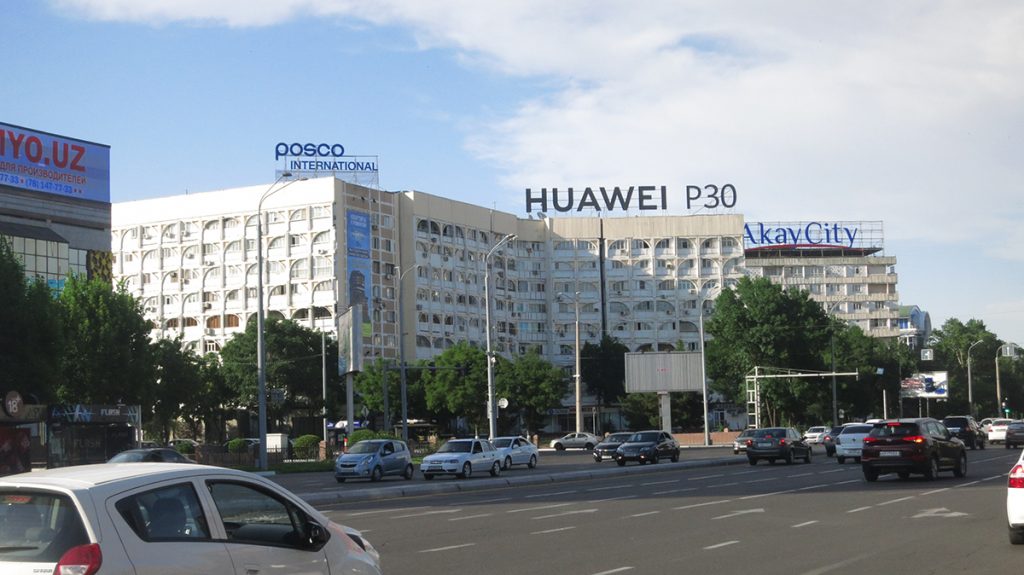
HUAWEI is a big name in the centre of Tashkent, one of those companies that have a marked presence in the city
***
Another important name that indirectly links China with Central Asia is that of Julian Shchutsky, the first translator of the I Ching (“Book of Changes”) into Russian. His name first attracted my attention as an alleged member of themystical-anarchist group which included artists and many other Anthroposophists and esotericists. As a prominent Sinologist, he left an impressive imprint on Russian Oriental studies. Julian Shchutsky was a polyglot; he translated from about 16 languages. He was Professor of the Leningrad Institute of Oriental Studies, Professor of the Leningrad State University in 1936-37, and a research scientist in the Asian Museum of the Russian Academy of Sciences in 1920-37. Shchutsky was given bibliographical responsibility for the Dauism and Alchemy portions of the Asian Museum’s new acquisitions. He also did extensive translations from late Tang poetry.
Shchutsky had various artistic talents but was modest about them. In his remarkable autobiography written in 1935, he says: “The greatest passion in my youth is music, especially Scriabin and later Bach. I was more interested in the theory of composition than performance. As a performer, I never achieved anything worthy of attention. Most of my music I wrote in the period of 1915 – 1923 – all of the pieces have been lost1Some of his music scores have been found and displayed for the first time at the exhibition We Treasure our Lucid Dreams held in the Moscow Museum of Contemporary Art GARAGE for which I conducted this research – AU. It is hardly possible to resume this work, since for this, it is necessary to live in music, and there is no time for that in my present life. […] Second in time and value in my life is of art and poetry. It began in 1918, but I do not treat my poems seriously. The only real result is mastering the poetic technique, which I use only as a translator. I was also engaged in painting, but I don’t have any real training in painting, except for lessons in the icon painting technique. I was also engaged in engraving on wood, but now I cannot continue these studies because of my poor eyesight. I participated in an exhibition at the Russian Museum in 1927. That’s all about my art.”
In 1922 he met the poet Elisaveta Vasilieva (aka Cherubina de Gabriak) in St. Petersburg. On 3 March 1923 she wrote to her friend and fellow Anthroposophist, the poet Maximillian Voloshin: “Love came into my life, maybe I learnt how to give for the first time. He is much younger than me, and I want to save his life. He is both an Anthroposophist and a Sinologist. He holds music, poetry and painting in his hands.” In 1927, Vasilieva, who was an important figure in Russian Anthroposophical movement, was arrested and deported to Tashkent where she died on 5 December 1928. Before her death, Shchutsky visited her in Tashkent twice, on his way to Japan and back. On his first visit she wrote, inspired by him, 21 poems attributed to Li Xiang Zi, a fictional Chinese poet exiled for his “belief in the immortality of human spirit”. The name of Li Xiang, invented by Shchutsky, means “a philosopher from a house under a pear tree”, where Vasilieva indeed lived in Tashkent. It was also a phonetic play on Elisaveta’s first name. This literary mystification became her swan song.
Shchutsky lived for another ten years full of professional achievements, as well as with fears of imminent repressions against him. He was arrested two months after defending his PhD dissertation on I-Ching in Pitkelevo, a village in the Leningrad province on 3 August 1937. He was charged with counter-revolutionary activities under articles 58-10 and 58-11 of the RSFSR Criminal Code, interrogated, tortured, trialled and finally shot on 18 February 1938.
***
River…
Here even rivers have green water,
Like dense and lazy mica that has
A shade of dust and wormwood …
Ah, only in the North is the water blue …
And here is the East.
Between us, like a river, lies a desert,
And tears are like sand.
(Li Xiang Zi, Tashkent, 1927)
Alexey Ulko, born in Samarkand (Uzbekistan) in 1969.
[1] Some of his music scores have been found and displayed for the first time at the exhibition We Treasure our Lucid Dreams held in the Moscow Museum of Contemporary Art GARAGE for which I conducted this research – AU


